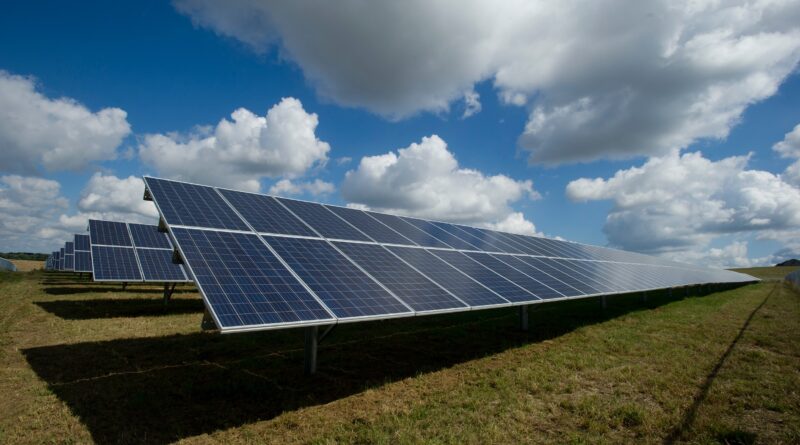Zinc-based batteries have significant potential for renewable energy storage
Zinc-based batteries are a new energy storage and conversion technology with significant potential for renewable energy applications, says Simon Norton, International Zinc Association (IZA) Africa Executive Director.
The technology has attracted attention due to its high theoretical energy density, safety, abundant resources, environmental friendliness, and low cost. This is according to a research paper entitled ‘Recent advances and perspectives for zinc-based batteries’ by Nano Research Energy.
The researchers note that considerable effort has gone into improving the performance of zinc-based batteries. Battery cycle life and energy efficiency can be improved by electrolyte modification and the construction of highly efficient rechargeable zinc anodes.
The global risk posed by climate change and the resultant energy crisis due to the excessive use of traditional fossil fuels have spurred the development of renewable energy sources. Therefore, the sustainable development of clean energy globally is critical. Renewable energy sources such as solar, tidal and wind power all have their role to play.
However, the intermittent and regional characteristics of renewable energy means that large-scale power generation and long-distance transmission projects are cost prohibitive. Thus, developing highly efficient energy storage and conversion technology is important to achieve effective utilisation and distribution of renewable energy to solve the issue of energy storage.
The researchers point out that lithium-ion batteries (LIBs) dominate the energy storage market at present due to their high capacity. Nevertheless, thermal stability, destruction of electrode structures, flammability of organic electrolytes and the lithium anode, high cost, and low specific energy density significantly limit their large-scale commercialisation.
In contrast, aqueous batteries, including zinc/nickel (Zn/Ni), zinc/manganese (Zn/Mn), iron/nickel (Fe/Ni), and iron/cobalt (Fe/Co), have the advantages of low cost, environmental friendliness, and high ionic conductivity.
Compared with iron and manganese, the slow hydrogen evolution of zinc in aqueous electrolytes eliminates the risk of fire. More importantly, metal zinc possesses outstanding electrochemical properties, such as a relatively low redox potential, an outstanding specific volumetric capacity, and a high theoretical capacity.
In terms of Zn-ion batteries (ZIBs), safety, high zinc abundance, and a simple assembly process promise large-scale energy storage application. Metal zinc has been used as an anode material since 1799. Zinc-based battery technology accounts for a third of the global battery market. Zinc can be used in Zn-air batteries (ZABs) and Zn-ion and Zn hybrid batteries.
Many companies have already been deploying ZABs for utility-scale energy storage. For example, NantEnergy installed 3 000 systems in nine countries in 2019 at $100/kWh. These ZABs with a half-open structure use oxygen directly from ambient air as a cathode reactant, which can exhibit high capacity and energy density.
They have a high theoretical specific energy density that is about five times greater than LIBs and are far less expensive. However, the achievable battery lifetime is about 150 cycles under current practical conditions, while the round-trip energy efficiency is usually under 60%, way below commercialisation requirements.
Zinc-based batteries tend to have poor cycle life, low coulombic efficiency (CE), and capacity fading. This is due to uncontrolled growth of zinc dendrites, insulation and discharge products with poor reversibility, and continuous consumption of electrolytes.
The operation of ZIBs is based on the stripping and plating of zinc on the anode, zinc ion insertion, extraction, and conversion reactions at the cathode, and zinc ion transfer between the cathode and anode. However, ZABs only involve stripping and plating of Zn on the anode in aqueous electrolytes.
During charging, zinc ions are redeposited on the zinc anode without the added complication of replacing battery components. Generally, the poor reversibility of the zinc anode and thermodynamic instability are the main obstacles to the commercialisation of zinc-based batteries.
Widely reported research has focused on zinc anode modification, cathode material design, and electrolyte development and improvement. Here the zinc anode has shown compatibility with both aqueous and non-aqueous electrolytes. Aqueous electrolytes have excellent ionic conductivity, non-flammability, easy battery assembly, and non-toxic properties.
However, the thermodynamic instability of the zinc anode causes severe challenges, including shape change, passivation, zinc dendrites, and hydrogen evolution reaction (HER). Similar to the Li anode, side reactions consume the zinc anode and electrolyte, resulting in low CE. For organic electrolytes, non-flammable electrolytes are often employed to reduce flammability, while corrosion is minimised thanks to their thermodynamic stability.
Nonetheless, they are strongly limited by low ionic conductivity and are not beneficial to Zn2+ diffusion. Recent studies have revealed that neutral and weakly acidic aqueous electrolytes can reduce the formation of zinc dendrites and inactive species in alkaline media. However, the CEs of plated and stripped zinc anodes and the utilisation of matrix-free zinc anodes are unsatisfactory.
“Over the past decade, significant progress and exciting breakthroughs have been achieved in designing anode structures, applying additives, and exploring alternative electrolytes to further commercialise zinc-based batteries,” highlight the researchers.
“Overall, zinc plays a vital role in renewable energy. It stands to enable the development of low-cost, green energy storage technologies, in addition to its contribution in the area of solar panels and wind turbines,” concludes Norton.
REFERENCE
Ge H, Feng X, Liu D, et al. ‘Recent advances and perspectives for Zn-based batteries: Zn anode and electrolyte’. Nano Research Energy, 2023, 2: e9120039. https://doi.org/10.26599/NRE.2023.9120039.




